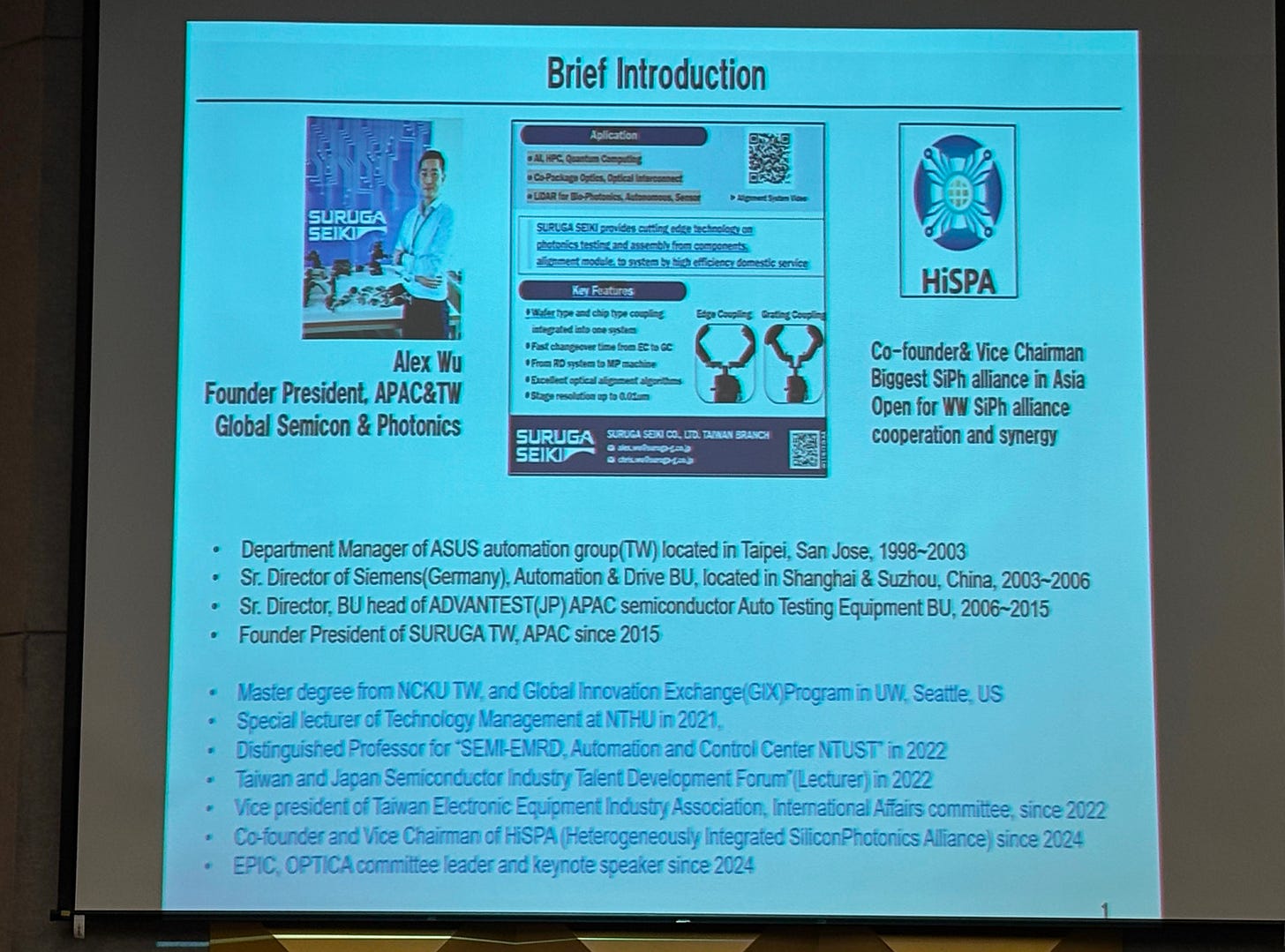From CMOS to Photonics: Taiwan-Japan Integration for the SiPh Era
Original Article by SemiVision Research (Suruga ,NTT ,PTI ,ChipMOS,KYEC,Shin-Etsu, Sumitomo,Tokyo Electron(TEL),Disco,SCREEN,Renesas,Fujitsu,,EPIC,Google,Amazon)
Japan-Taiwan Silicon Photonics Collaboration: Strategic Integration of Complementary Strengths and Global Opportunities
Background Overview
Amid the rapid advancement of generative AI, big data analytics, and high-performance computing (HPC), Silicon Photonics (SiPh) is emerging as a critical pillar to overcome the structural limitations of the semiconductor industry. Combining ultra-high bandwidth and low-power optical transmission, SiPh is redefining the architecture of chip-to-chip interconnects, data center infrastructure, and future AI SoC designs. As Moore’s Law approaches its physical limits and electronic interconnects face increasing bottlenecks, SiPh is widely recognized as the foundation of next-generation semiconductor communication and computing systems.
Japan and Taiwan, two technological powerhouses in Asia, are uniquely positioned to drive this photonic revolution through deep and complementary collaboration. Japan leads globally in materials science, photonic device design, and high-precision manufacturing equipment. Meanwhile, Taiwan holds world-class capabilities in wafer fabrication (e.g., TSMC), advanced packaging, and system-level integration (e.g., ASE, PTI, KYEC), enabling mass production and rapid deployment of photonic systems at global scale.
This synergy is forming a complete and vertically integrated SiPh value chain—from materials innovation and process integration to photonic packaging and system-level validation. At the “JP+TW SiPh Forum” held in Taipei, Suruga Seiki emphasized that Japan-Taiwan collaboration is not just about improving supply chain efficiency—it is about elevating the entire value chain. Through joint initiatives in equipment localization, packaging platform development, IP/technology transfer, and coordinated market expansion, the Japan-Taiwan alliance has the potential to create a new geo-strategic supply chain—one that supports AI infrastructure while mitigating dependency on U.S.-China-centric technology flows.
“When Light meets Silicon, and Japan meets Taiwan,” it’s more than a convergence of technologies—it’s a strategic realignment across manufacturing, ecosystems, and regional leadership in the semiconductor era.
For Paid Members, SemiVision will discuss topics on
Taiwan’s Strengths: Excellence in Manufacturing and Application Integration
Taiwan’s Strength: Dual-Engine Power in Manufacturing Capacity and Application Integration
Japan’s Strength: A Deep Foundation in Materials, Equipment, and Core Photonic Components
Strategic Significance of Japan–Taiwan Collaboration: A New Model for Asia’s Silicon Photonics Value Chain
From OEM to Strategic Value Chain Alliance
Cooperation Roadmap: From Platform Validation to a Global “National Team” Strategy
High-Yield SiPh Mass Production (HVM): A Japan–Taiwan Hybrid Platform Integration Model
Showcasing Asia’s Silicon Photonics Power to the World
Current Status and Outlook of the Global Silicon Photonics Industry






